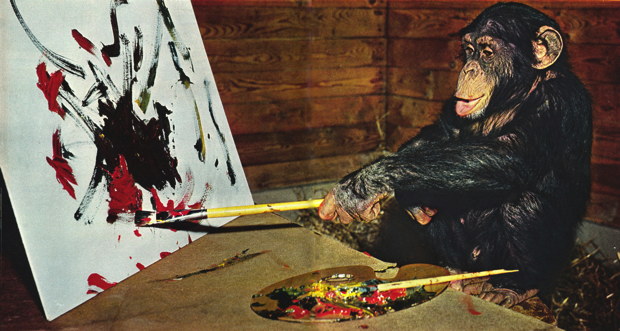A floor planning algorithm could empower designers, but could cease aiding the process in all kinds of ways. CAD has computerized previously analog drafting tools, greatly speeding up the drafting process. Computers, however, are capable of more; specifically, repetitive tasks in computation and analysis. I do not envision that a floor planning algorithm would run autonomously, but that it could provide real-time feedback from designer inputs, complementing the designer’s intuition and creativity with its calculated intuition.
The time-scales of the SD, DD and CD phases of a project allow for a meaningful connection between the designer and the finer details of a design. However, technical issues in drafting can stagnate the flow, making the process more about drafting knowledge than architectural design.
It may be easy to say, but crafting a simple interface that is dynamic and customizable is a huge challenge. While drafting in AutoCAD, lag-time can be minimal or nonexistent. This allows for productive engagement. Thus far in my algorithm, there is a lot being processed in the background, so the time between making a change and seeing results operates with a delay (like communication between mission control and distant spacecrafts). This delay may negate hope for productivity, or an organic workflow. This is why I am trying to make use of a pre-processed database of geometric possibilities.
Scenario 1: The final task for the designer at the end of a day would be to input certain parameters developed over the course of the day. During the night the algorithm can explore combinatorial variety and generate a growing database of possibilities.
Scenario 2: Drafting operates much like it does now, but the algorithm / software is recognizing every action. As geometry is drafted and attributes are assigned, everything is analyzed and compared with a database. With each change, the degrees of freedom within the design space adapt.
I want a combination of Scenarios 1 and 2 to work in tandem to provide quick feedback while exploring variety in the infinite design space. By integrating graph analysis with geometry drafted in real-time, the processing load could become manageable. Even with a very limited design space, the possible combinations may be impossible to parse. Using a graph search is somewhat akin to PageRank by Google, which uses a modification of Katz Centrality but instead of webpages and links it assesses rooms, their size ranges, adjacency, and possible configurations. Bubble diagrams have been widely used within architecture as a starting point for understanding adjacency and spatial configuration. As the design moves forward, it is common for the rooms to evolve into less curvy polygons, such as triangles, rectangles, and a variety of n-sided or orthogonal polygons.

Many questions must be answered to journey into the design space in such a way to avoid the algorithm operating unfavorably. I could picture a dystopian scenario where designing is like writing a cover letter in Word with Clippy, or shopping on Amazon with AutoComplete. Perhaps instead of a paperclip, the mascot could be a t-square, and would say “Looks like you are designing a 2BR house. Would you like help with that?” AutoComplete can be sometimes useful, sometimes disastrous, and Clippy is probably on the island of misfit assistants. Let me be clear: this is NOT the vision but rather the nightmare, and is just as important to consider.

If the algorithm is empowering the designer to be creative, it begs the question: how do we define creativity, and what is its process? Computational creativity is at the nexus of artificial intelligence, cognitive psychology, philosophy, and art. Newell, Shall, & Simon define creativity as having the following traits:
- The answer is novel and useful (either for the individual or for society)
- The answer demands that we reject ideas we had previously accepted
- The answer results from intense motivation and persistence
- The answer comes from clarifying a problem that was originally vague
This provides some direction for methodology, but the ways of executing creativity are infinite, to which everyone assigns their own meaning. In 1964, an artist by the name of Pierre Brassau had multiple paintings featured in the Gallerie Christinae in Goteborg, Sweden. The works were praised as having “powerful strokes” and that Pierre “performs with the delicacy of a ballet dancer.” It was later revealed that Pierre Brassau was, in fact, a four year old chimpanzee from a nearby zoo. Despite this revelation, a local art columnist maintained that one work was “still the best painting in the exhibition.” Gleaning meaning from art can be quite subjective. Although it may not have been an expression of human thoughts or emotions, Pierre’s work could still resonate with some people.

Architecture is far more formal than art, but subjective tendencies map similarly between them. I am trying to create something that can empower my particular design methodology. This may be different from others’, but what excites me about algorithmic design is the possibility of crafting new tools for design, while designing. I use building and natural typologies to guide the algorithm, and try to insert my personal methodology only when I feel it is absolutely necessary. Designers can craft their own tools, or choose to modify an existing tools. I am one of many exploring the potential of generative design, and the community that has been created fascinates me.
Consider Mendelssohn’s Violin Concerto and the Devil Went Down to Georgia. They contain two very different applications of the same instrument. The first is highly technical, dramatic, and elegant, whereas the energy from the latter induces hand-clapping and foot-stomping. One is surrounded by classical string and wind instruments, the other by electric guitars and drums.
Both can be enjoyed for their creativity, but different methodologies went into composing them, and the spirit of each differs considerably. Antonio Strativari refined the violin, empowering composers and musicians to make their instruments sing like never before. For Charlie Daniels, a fiddle would do the job just fine, but for Hilary Hahn, a Strativarius may allow her to reach fuller notes. Different than a Strativarius, computerized tools are easier to share and access, so empowerment can be broader.
A different example can be seen in evolution. Despite similar origins, the millions of species throughout the animal kingdom have evolved to take on very different forms, and some of the greatest residential architects don’t even have opposable thumbs. Red ovenbirds construct multi-story dwellings out of clay, and compass termites erect thermally efficient mounds, making use of solar angles and exposure. Many examples of animal architecture show that it is possible to live symbiotically with the environment, and we are able to observe it through the diversity of life that still exists. Although homo sapiens have tended to homogenize to ensure our short-term benefits, some seek to maintain and create greater diversity. This is evident in science, engineering, and the arts, and the fact that we are part of a larger system that may be resilient, but not infinitely so, is an important takeaway. Hopefully we can craft tools that enable diversity rather than exterminating it.
